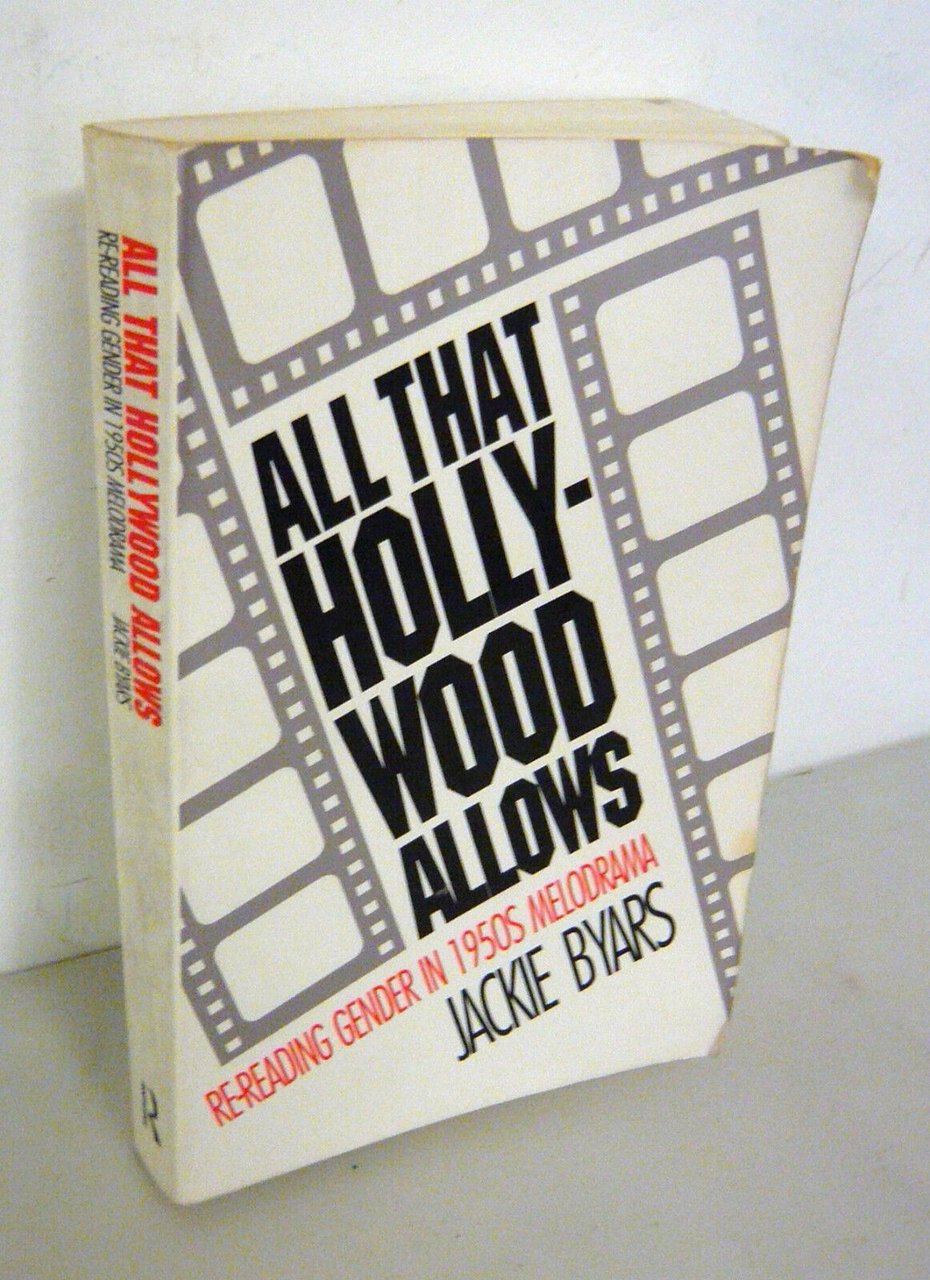
Libri antichi e moderni
Byars,ALL THAT HOLLYWOOD ALLOWS.Re-reading Gender in 1950s Melodrama,1991[cinema
9,90 €
Modo Infoshop
(Bologna, Italia)
Le corrette spese di spedizione vengono calcolate una volta inserito l’indirizzo di spedizione durante la creazione dell’ordine. A discrezione del Venditore sono disponibili una o più modalità di consegna: Standard, Express, Economy, Ritiro in negozio.
Condizioni di spedizione della Libreria:
Per prodotti con prezzo superiore a 300€ è possibile richiedere un piano rateale a Maremagnum. È possibile effettuare il pagamento con Carta del Docente, 18App, Pubblica Amministrazione.
I tempi di evasione sono stimati in base ai tempi di spedizione della libreria e di consegna da parte del vettore. In caso di fermo doganale, si potrebbero verificare dei ritardi nella consegna. Gli eventuali oneri doganali sono a carico del destinatario.
Clicca per maggiori informazioniMetodi di Pagamento
- PayPal
- Carta di Credito
- Bonifico Bancario
-
-
Scopri come utilizzare
il tuo bonus Carta del Docente -
Scopri come utilizzare
il tuo bonus 18App
Dettagli
Descrizione
Jackie Byars,
ALL THAT HOLLYWOOD ALLOWS.
Re-reading Gender in 1950s Melodrama.
Routledge, London 1991,
brossura, 15x23 cm., pp.326,
illustrazioni in bianco e nero,
testo in inglese,
peso: g.546
cod.3520
CONDIZIONI DEL LIBRO: buone,
imperfezioni agli angoli della copertina,
pagine leggermente ingiallite,
poche note a penna
Contents
Acknowledgments, ix
Introduction
Saying What Can’t Be Said, Reading What Must Be Read:
Feminist Criticism, Melodrama, and Film Studies, 1
Criticism and Struggle, 1
Melodrama and History, 8
Melodrama and Film Studies, 13
Chapter One
Cultural Studies: An Alternative for Feminist Film Studies, 25
Feminism and Film in the United States, 25
Feminism, Marxism, and Cultural Studies, 3 8
Theorizing Ideology, 45
Ethnographic Audience Research and Epochal Analysis:
Reading Texts, 5 8
Chapter Two
Re-reading Sociological Criticism: Roles, Stereotypes, and
Popular Film Melodramas of the Early 1950s, 67
Rethinking Roles and Stereotypes, 67
Struggling over the Meaning of “Woman,” 77
Working Women in Film Melodramas of the Early 1950s, 89
Chapter Three
Re-reading Narrative Structure and Gender:
The “Social Problem” Film in the 1950s, 107
Narrative Structure and the Representation of Gender, 107
The Social Problem Film after World War II: Evolution of a
(Sub) Genre, 112
The Social Problem Films of the 1950s, 115
Chapter Four
Re-reading Psychoanalysis for Feminist Film Studies:
The “Family Romance” and “the Gaze” in Female-Oriented
Film Melodramas of the 1950s, 132
Style and Substance in the Family Melodrama, 132
Feminism and Psychoanalysis, 136
Stories of Mothers and Daughters, 146
Enunciative Patterns: Seeing and Being Seen, 158
Chapter Five
Race, Class, and Gender: Film Melodramas of
the Late 1950s, 210
Race, Class, and Feminist Film Studies, 210
Coming to Manhood in Male-Oriented Melodramas, 217
“Dynastic Melodramas,” 227
Imitating Life, 238
Epilogue
Reflections, 259
Notes, 265
Bibliography, 289
Filmography, 303
Index, 315

